
WILLY MESSERSCHMITT
Wilhelm “Willy” Emil Messerschmitt (June 26th, 1898 – September 15th, 1978) was one of the most influential German aircraft designers and manufacturers of the 1930’s and World War Two. His aircraft used by the German Luftwaffe were some of the most successful and innovative fighting machines of that period including the Bf 109 (the Bf designation comes from the Bayerische Flugzeugwerke company where Messerschmitt designed the fighter. It was renamed Messerschmitt AG after July 1938 when Willy Messerschmitt became chairman and managing director) and the first operational jet fighter the Me 262 Schwalbe. In 1948 he was sentenced to 2 years in prison for using slave labour in his factories during the war. After being released from prison he continued in various manufacturing activities including cars and aviation before retiring in 1970.
1935 – THE DAWN OF A NEW ERA IN FLIGHT
Bf 109A
The Messerschmitt Bf 109 can be classed as the first modern fighter plane. It was a sleek monoplane of all metal construction, with an enclosed cockpit and a retractable landing gear. The Bf 109A Anton was introduced in 1935 (a year before the legendary Supermarine Spitfire) and was a complete revelation in a time when biplanes and fixed landing wheel aircraft were still the norm.


The Bf 109A was powered by a Junkers Jumo 210B 631hp engine which was later upgraded to the Jumo 210D with 661hp. This variant of the famous fighter was lightly armed with only two cowl-mounted 7.92 mm machine guns.
Bf 109B
An improved Bf 109 variant with the more powerful Junkers Jumo 210D 661 HP engine and variable pitch propeller was introduced and titled the Bf 109B Berta (B-1 and unofficially the B-2 with the variable pitch propeller). 341 B variants were built but still had the 2 machine guns which were proven inadequate. Some aircraft were fitted with an additional engine mounted gun but this proved unreliable.

CONDOR LEGION
The Bf 109 fighter became quite a shock to the Spanish Republican opponents (the forces of the then government of Spain and their allies Russia, Mexico, France and foreign volunteers) during the Spanish Civil War (1936-1939) when they took to the skies with the Condor Legion on the side of General Franco’s Nationalist’s (rebel forces allied with Germany, Italy, Portugal and foreign volunteers) who eventually claimed control of Spain. Bf 109A, B and C variants saw operational service in Spain and quickly gained air superiority for the Nationalist’s.

Bf 109C
The Bf 109C Caesar variant (C-1 to C-3) was powerful with a liquid cooled inverted V-12 Junkers Jumo 210G 690 HP engine, fast with a top speed of 467 kmph or 290 mph (around 160kmph or 100 mph faster than any comparable aircraft at the time it was introduced) and well armed with multiple 7.92mm machine guns (two above the engine and eventually one in each wing). It was short lived however, as only 58 were produced.



WORLD WAR TWO
Bf 109D
As the war in Spain came to an end in 1939, Europe was then engulfed in World War Two. Leading up to that time Messerschmitt continued to develop the Bf 109 with a more powerful engine and weaponry (pre war variants all had versions of the Junkers Jumo 210 engine). Prewar the Messerschmitt Bf 109D Dora (D-1 to D-3) was the standard fighter of the Luftwaffe (647 Bf 109D of all versions were built). It was fitted with a Junkers Jumo 210D engine and initial armament was 2 wing-mounted and 2 nose-mounted 7.92 mm machine guns. The D-2 variant was also fitted with an engine mounted gun but this again proved unreliable. The D-3 variant was fitted with 2 wing-mounted 20mm cannons.

The Bf 109D only saw limited service in World War Two and were rapidly phased out by the superior Bf 109E Emil variant (235 D models remained in service during the 1939 Poland Campaign). The last Bf 109D’s were used as night fighters into early 1940.

Bf 109E
The mainstay of the Luftwaffe until 1941 was the Bf 109E Emil variant (Emil was Willy Messerschmitt’s middle name – E-1 to E-9 variants) which was integral to maintaining air superiority during the Blitzkrieg (“lightning war”) 1939-1941. Production of the E variant began in 1938. Powered by a new Daimler Benz DB 601 1,085 hp – 1,159 hp engine (depending on the variant: DB 601A – BD 601Aa) and armed with two 7.92mm machine guns above the engine and one 20mm cannon in each wing this was a significantly more powerful variant than its predecessors (the E-1 variant had all machine guns but many were upgraded with cannons, the E-2 variant had 2 wing-mounted cannons and one in the engine but this again proved unreliable and few were built). The top speed of the Bf 109 E had now increased to around 560 kmph or 348 mph. Approximately 3,500 E variants were built.



By 1940 and the Battle of Britain the British Supermarine Spitfire Mk.I/II and the Bf 109E were more or less comparable aircraft in performance with each having a slight edge in certain characteristics. Despite Allied technology catching up the Bf 109 still remained a formidable fighter (albeit short ranged which would become a major problem over the skies of Britain where they could only protect German bombers for about 20 minutes before having to return to bases in the conquered France). The E variant served on the western, eastern and North African fronts. During Operation Barbarossa in 1941 (the invasion of Russia) the Bf-109E had an aerial victory of 21:1 the highest achieved on the Eastern front.

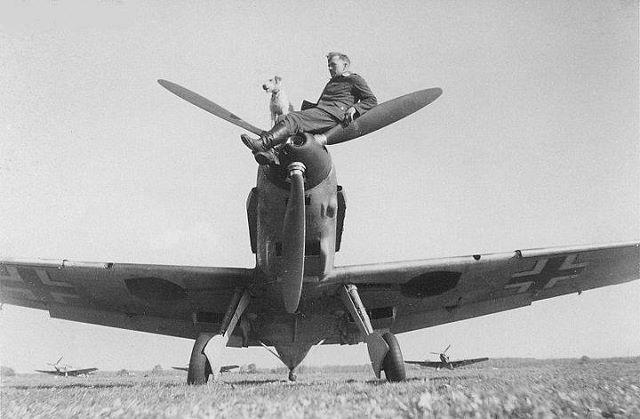


Bf 109T
An interesting side development was the Bf 109T which was intended to be used on the cancelled German Navy aircraft carrier the Graf Zeppelin. This variant was modified for carrier landings (short take off and landing characteristics) and included a tail-hook, catapult fittings and had an increased wingspan with larger ailerons. Armament consisted of 2 x 7.62mm cowl mounted machine guns and 2 x 20mm wing mounted cannons. 70 Bf 109T-1 fighters were going to be built with Daimler-Benz DB601N engines but only 7 were built when the carrier was cancelled in 1940 (the carrier hull was launched in 1938 but never completed). The remaining 63 airframes were built as Bf 109T-2 variants without the carrier equipment and due to their short take off and landing capability were deployed to Norway until replaced in 1941. They would go on to be used in various training roles in Germany and Norway until 1944.

Bf 109F
As World War Two progressed so did the Bf 109. The Bf 109F Friedrich variant (F-1 to F-4) began development in 1939 and entered service in late 1940. The F variant saw an incredible change in the Bf 109 with a complete redesign of the wings, cooling system and fuselage to give a new sleek and more aerodynamic appearance. 3,444 F variants were produced between 1939 and 1942.

The first F-1 and F-2 variants were fitted with a Daimler-Benz DB601N 1159 HP engine (top speed 615 km/h / 382 mph), featured increased range and armament was changed to 2 cowl mounted 7.92mm machine guns and generally a 20mm engine mounted cannon that fired through the propeller hub (the F-2 variant had a 15mm cannon and the later variants could also be fitted with 2 x 20 mm cannons in under wing gondolas). F-3 and F-4 variants were fitted with an improved Daimler-Benz DB601E 1332 HP engine (which increased the top speed to 659 km/h / 410 mph) and broader propeller blades for better high altitude performance.

Bf 109G
Next was the Bf 109G Gustav variant which looked very similar to the Bf 109F but had a number of improvements including strengthened wings, additional armour for the fuel tanks, an internal bullet-proof windscreen and broader propeller blades for improved high altitude performance. A new uprated Daimler-Benz DB605A 1,455 HP engine was also fitted and from 1944 high altitude variants were fitted with a high-altitude variants with the Daimler-Benz DB605AS or D series engine. Overall the G variant was the most produced Bf 109 with over 20,000 coming off the production line (3,045 G-1 to G-4’s, 475 G-5’s, over 12,000 G-6’s, 5,500 G-14’s and 2,600 G-10’s).
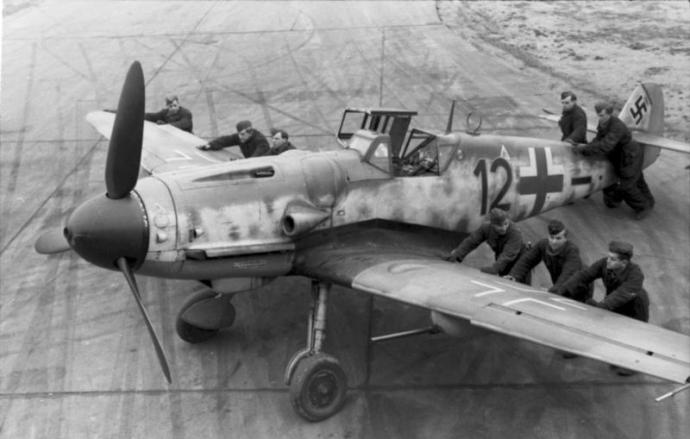
Standard armament for the Bf 109G consisted of 2 x 7.62mm cowl mounted machine guns (upped to include 2 x 13mm machine guns with the G-6 model in 1943), a 30mm engine mounted cannon firing through the propeller hub and it could also carry 2 x 20mm or 30mm cannons in underwing gondolas. From 1943 a Wfr. Gr. 21 rocket could also be fitted under each wing to fire at Allied bomber formations. Bomb racks and fuel drop tanks could also be fitted.
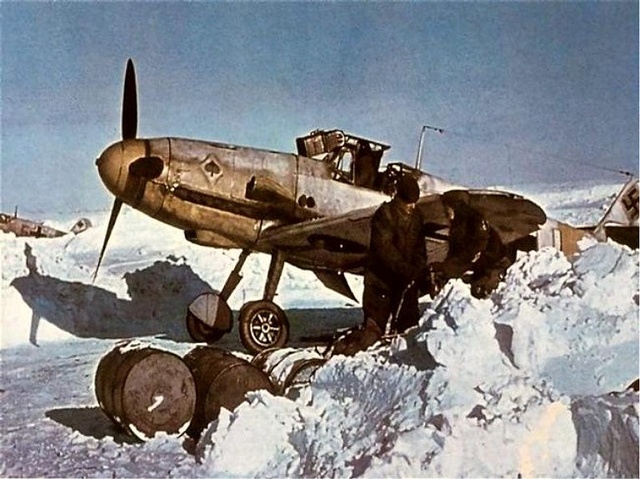
The G-1 to G-4 were introduced from 1942 to 1943 and G-5 to G-6 from 1943 to 1944. Modified versions lead to the G-8 reconnaissance variant and the G-12 two seat trainer converted from older or damaged G-4/G-6 airframes with the internal fuel-tank reduced in size to accommodate the second cockpit.





The G-14 fighter was introduced in July 1944 with a DB605AM 1,755hp engine and three-panel Erla-Haube clear-view canopy. It was an attempt to create a standardised variant incorporating all the various changes made to G-6 models to ease production issues across decentralized factories (not overly successfully apparently). The new engine improved the overall performance of the aircraft. The G-14/AS variant was high-altitude fighter with a DB 605ASM high-altitude engine.


Despite the lower variant number, the G-10 fighter was introduced in November 1944 with the new DB605 D series engines (DM/DB/DC), streamlined cowling and the three-panel Erla-Haube clear-view canopy. This variant incorporated the same powerplant as the new Bf 109K and was produced to maintain numbers until that variant could be mass produced.

Bf 109H
In early 1944 the Bf 109H high altitude fighter was developed from the Bf 109G-5 airframe and fitted with a Daimler-Benz DB605A engine with GM-1 boost. It featured an increased wingspan but this resulted in wing flutter problems and only a small number of H-1 examples were produced and used operationally over England and France before the program was cancelled (including flights following the Normandy D-Day invasion on June 6th, 1944).

Bf 109K
Ongoing Bf 109 development culminated in the improved Bf 109K-4 Kurfürst which was introduced into service in mid October 1944. This variant fitted with a Daimler-Benz DB605DB/DC engine produced a top speed of 709 km/h / 440 mph and was armed with two 13mm machine guns above the engine, one 20mm cannon in a pod under each wing and a 30mm cannon firing through the propeller hub. They could also be armed with underwing rockets for use against Allied bombers.
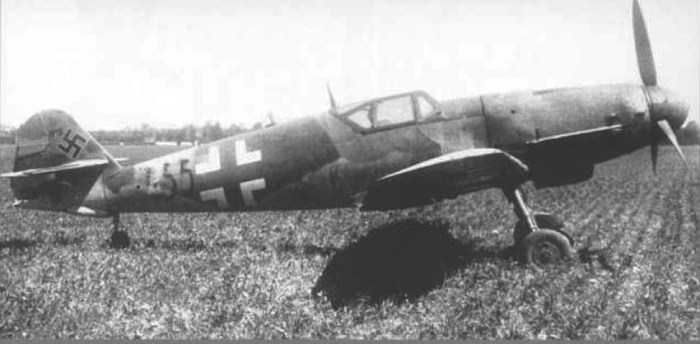

Approximately 1,600 Bf 109K-4’s were produced by the end of March 1945 and it is likely more were produced before the German defeat in May 1945. The Bf 109 was eventually outclassed by Allied fighters but remained the mainstay fighter of the German Luftwaffe throughout World War Two.
Bf 109 Production and Operators
By 1945 there had been approximately 34,000 Bf 109’s built, making it the most produced fighter aircraft in the world (over 20,000 Bf 109G’s were manufactured making it the most produced variant). In addition to Germany the Bf 109 was operated by their Axis allies including Bulgaria (19 E and 145 G models), Croatia (Approximately 23 E & 27 G models), Finland (159 G models – apparently the Finns flying the Bf-109 G claimed a 25:1 victory ratio against the Soviets! Retired in 1954), Hungary ( a major operator of the Bf-109 the Hungarians received 3 D, 50 E, 66 F and approximately 490 G models), Italy (operated 302 G and 3 K models), Japan (5 E models were delivered in 1941 for testing and evaluation), Romania (operated 69 E, 7 F and approximately 310 G models. Retired in 1955) and the Slovak Republic (30 E and 30 G models). Other non Axis nations who operated the Bf 109 were Switzerland (operated 10 D, 89 E, 2 F and 14 G models. Occasionally they were used in combat with German aircraft that entered Swiss airspace. The last was retired in the 1950’s) and Yugoslavia (operated 73 E models and at the end of World War Two also received some Bf 109’s from Croatia and Bulgaria).




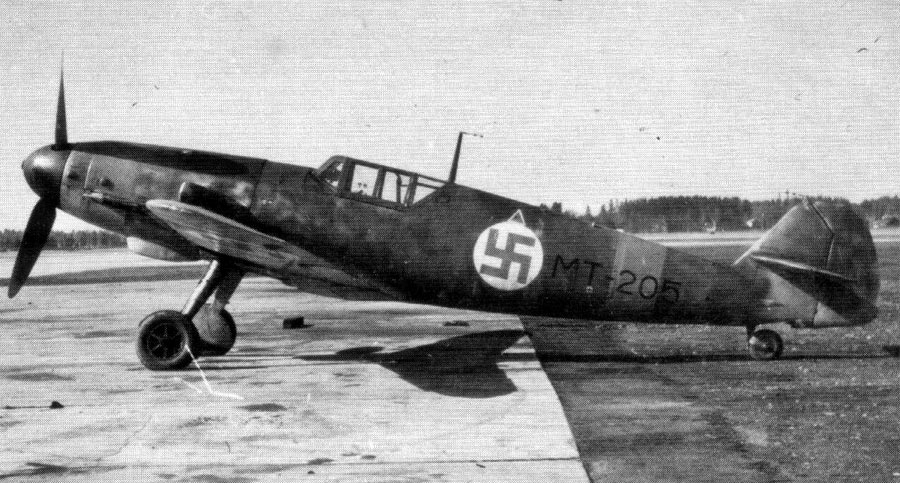

Other countries used variants of the Bf 109 with different engines to the Daimler Benz. These included the Avia S-199 in Czechoslovakia (559 were built with captured plans after World War Two using a Junkers Jumo 211 engine and were retired in 1957) and ironically Israel (23 were received in March 1948 and used immediately in the 1948 war against Egypt but proved to be unreliable and despite victories over the enemy only about 6 were operational by the end of that year); and the Hispano Aviacion HA-1112 Buchon in Spain (239 were built with a Hispano-Suiza engine and later the Rolls Royce Merlin engine until 1958, with the last retired in 1965!). A number of the Spanish aircraft were used in the Battle of Britain movie in 1969 and were painted in Luftwaffe colours to represent Bf 109’s.

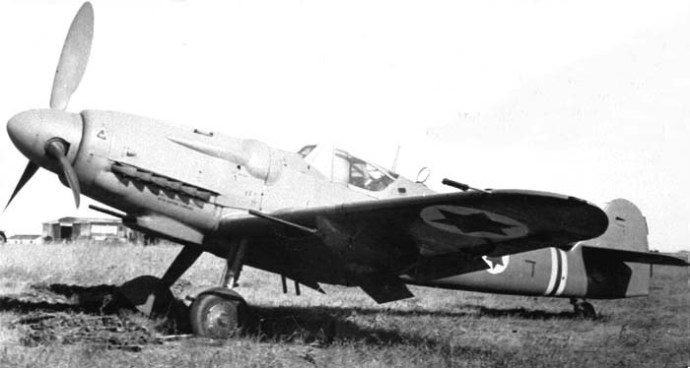

THE ACES

The Messerschmitt Bf 109 destroyed more aircraft than any other fighter in World War Two. Many of the top German air aces flew the Bf-109 and just over 100 of them achieved 100 plus aerial victories. 13 had over 200 including the third greatest air ace of all time Günther Rall with 275 victories and 2 had over 300 making them the greatest air aces of all time – Erich Hartmann 352 victories and Gerhard Barkhorn 301 victories. This group of air aces and their fellow pilots destroyed nearly 15,000 enemy aircraft flying the Bf 109!
Erich “Bubi” Hartmann (1922 – 1993 “Bubi” loosely translates to “boy” a nickname he received due to his youth) flew the Bf 109G and K over the Eastern front with the legendary JG.52 squadron (the most successful fighter wing of all time). He was known as “Black Devil” to the Soviets due to the black tulip painted on the nose and propellor hub of his Bf 109G. The sight of this aircraft was enough for the Soviet pilots to keep away, so he later had it removed so they would engage him!
Amazingly Hartmann amassed his 352 victories (260 of which were fighter aircraft including 7 American Mustangs over Romania) in just 2.5 years between 1942 and 1945, flying 1,405 missions in which 825 involved combat (his first victory in November 1942 was an Il-2 Sturmovik and on his last mission in May 1945 he shot down a Yak-7 fighter). During this time he was never wounded or shot down, but he did crash a few times though (on one occasion he was being chased by 8 US Mustangs, low on fuel and out of ammunition he evaded them as long as he could but with no hope of making it back to base he had to bail out over Romania)! His key to success was surprise and attacking at point-blank range to make sure his shots counted.

By wars end Hartmann was a Major, had received the highest German military award of the Knights Cross of the Iron Cross with oak leaves, swords and diamonds (presented by Hitler himself. Hartmann was completely drunk at the time on cognac!) and was only 23 years old! Although he surrendered to US forces in 1945 he was to spend the next 10.5 years imprisoned in the Soviet Union and was not released until 1955. He rejoined the Luftwaffe and served again from 1956 to 1970 leaving the service as a Colonel. I have read the biography of Erich Hartmann “The Blonde Knight of Germany” and can thoroughly recommend it as a fascinating read, especially about his time of imprisonment where he stood up to the Soviets and refused to submit to their will, nor would he sign their documents stating his “crimes” (this lead to false war crime charges and plenty of solitary confinement!). He was one of the last German prisoners to be returned home in 1955 and in 1997 the Russian government officially exonerated him of any war crimes saying the charges were unlawful.
PRESENT DAY
Today only around 70 Messerschmitt built airframes survive in various states of restoration and display in museums and private collections around the world (plus a number of surviving foreign built variants such as the Czech Avia S-199 and Spanish Hispano HA-112 Buchon which are often painted in German colors!). The Bf 109 survivors include a few that are flight capable. I have been lucky enough to see a number of these surviving aircraft in Australia, Europe, Russia, Canada and the United States.



One such surviving example that is flight capable is Messerschmitt Bf 109E-3 Emil at the Flying Heritage Collection in Everett, Washington USA. It was built in 1939, but crashed off the coast of France near Calais in 1940. The airframe was not rediscovered until 1988! Following an extensive reconstruction and restoration it is now one of the few flying examples of the Bf 109 in the world today.

In 2011 I was lucky enough to see the Bf 109E-3 fly and in February 2012 I was visiting the Flying Heritage Collection when they were conducting annual maintenance on many of their aircraft. This provided me with a rare opportunity to see what was under the cowl in the form of the Daimler Benz DB 601 engine. This engine is immaculately maintained and looks virtually brand new which is quite amazing given that it is over 60 years old.



If you would like to learn more about the Bf 109 this video is quite informative and gives a great background on the fighter. The legend lives on…

Interesting Deano, didn’t realise that Israel used a variant of it!
LikeLike
Thanks Rob, a little ironic wasn’t it? The Avia version didn’t prove to be too reliable in the desert and they were pretty much all grounded by the end of 1948. They did shoot down a number of Egyptian aircraft beforehand though!
LikeLike
[…] 1942 Spain entered an agreement with Germany to produce a variant of the Messerschmitt Bf-109G. The only problem was that Germany could never provide enough airframes or engines to get […]
LikeLike
[…] day they had planned for this particular saturday was something very rare to see, the museums Messerschmitt Bf-109E Emil and Supermarine Spitfire Mk.Vc, and a Supermarine Spitfire Mk.IX (owned by the Historic Flight […]
LikeLike
[…] 1940 the Supermarine Spitfire Mk.VB and Hawker Hurricane Mk.IIB; and their arch-enemy the German Messerschmitt Bf-109E-3. The latter is displayed as a fallen foe (which seems to have been inspired by a 1940 photo that […]
LikeLike
[…] he was tasked with interviewing many leading characters in the German aviation industry including Willy Messerschmitt (they did not get along – “We had a bit of a to-do” about compromises in the quality of […]
LikeLike
[…] and achieved 28.5 confirmed air to air victories including German, Italian and Japanese fighters (Messerschmitt Bf-109, Macchi C.202 and Mitsubishi Zero), bombers and reconnaissance aircraft. On his first mission back […]
LikeLike
I knew most of it but this is a great article well researched.
As a former teacher I give you an A+
LikeLike
Thanks for the marks!
LikeLike
[…] primary German fighter in the Battle of Britain was the Messerschmitt Bf-109E Emil. Now while it was a great combat aircraft and could hold its own against the British Spitfires and […]
LikeLike
Toliver’s ‘Blond Knight..’ was written in the 60s at the height of the Cold War. In the words of one historian ‘Blond Knight’ “..offered little research, nothing from Russian archives and no bibliography..”. Since then some have looked a little more critically at Hartmann’s record. Indeed only 289 of Hartmann’s ‘victories’ were in fact ‘officially confirmed’ before the German claims system broke down in early 1945. Secondly, only 307 of his supposed claims had even been ‘officially’ filed before the end of the war.. Hartmann’s chief ‘tactic’ involved catching lone Soviet aircraft unawares far behind the front lines, with only a wing man’s statement to support his claim. This goes someway to explaining the disparity with Soviet records. Hartmann would often claim three or even five Soviet a/c shot down on a sortie. Russian historian Dimitri Khazanov wrote ;” (..) Hartmann’s actual successes probably amounted to no more than 70 to 80 Soviet aircraft shot down…” He continues… “It is therefore not incorrect to state that the scores of other famous JG 52 aces are likely to have been largely superior to Hartmann’s, given that the evidence for his victory claims is much more unreliable than that for other pilots such as Barkhorn and Rall (..) .” Much more here
http://falkeeins.blogspot.co.uk/2010/03/erich-hartman-352-victories-or-80.html
LikeLike
An interesting perspective. It is one of those things that can be questioned for sure but most books, websites and articles I have ever read credit him with that many victories. Given German pilots flew to the bitter end and were not sent home after a tour of duty they had much more opportunity to rack up large numbers (assuming they survived). The blog that you linked also says:
“And so on and so forth. I should also point out that Khazanov gives no indication of how or why he arrives at a final victory total of ” 70 to 80 “for Hartmann..his article is simply not detailed enough and he presents evidence from Soviet archives for only a handful of dates. However his research does not appear to be motivated by ‘political’ considerations -he does after all praise Rall and Barkhorn.
Yet it was these two officers who persuaded Hartmann back into the Federal German Air Force post-war. Hans Ring and Jean-Yves Lorant responded to Khazanov’s article in a later issue of ‘Air Magazine’ – both make the simple point that such ‘over-claiming’, if that was what Hartmann was doing, would not have been tolerated for long by Hartmann’s comrades in JG 52. Nor would he have been welcomed into the Bundesluftwaffe if he was somehow ‘tainted’ ….
Khazanov concludes .”..Hartmann never enjoyed the reputation among his comtempories accorded Mölders or Galland….””
LikeLike
[…] with the British Supermarine Spitfire and American North American P-51 Mustang, the German Messerschmitt Bf-109 has to be one of the most recognizable fighter aircraft of the World War Two era. First entering […]
LikeLike
Museu Aeroespacial de São Carlos, São Paulo, Brazil, have one G model with desert air filter, completely restored.
LikeLike
Hi, Thanks for the info. My understanding is that one has original wings but a newly built fuselage. Is that correct?
LikeLike
thank a lot for your site it assists a whole lot.|
LikeLiked by 1 person
An excellent post, really, really interesting! I had major problems finding it though and only got there by doing a search for “Avia S-199”. There was certainly no working one click access from my email notification. It just said “Oops! That page can’t be found”
LikeLiked by 1 person
Thanks. That’s an old post. My apologies on the Avia post, I accidently published that but its not quite ready – it will be a future post
LikeLike
WOW!!! A Real honest to Eagles BF-109E-3 in Better than Pristine condition: I wish I could just stand next to it and photograph it in its Entirety. Every inch, color and shape that connects to another thing and all its wires and lines of connected tubing’s and rivets are a feast of the mind and soul. I am building a 1/24th scale model of this aircraft and truly am set back on my heels, as my eye wanders over this beautiful collection of time and space! The effort and energy these Engineers must have had in their hearts as men of honest invention is beyond anything today in its simplicity and elegance! It actually reminds me of why we kill one an other in combat. It must have been a “high” unlike anything else previously experienced in terms of bravery and courage! Of course, when Mitchel began his work on the “Spitfire” he did not completely understand what the young men of both countries were going to put into motion. And yet, to climb into the heavens and feel the “Sting” of failing and crash into the reality of the Now; it must have been beyond description or words. Bravo Boys! Bravo!!
LikeLiked by 2 people